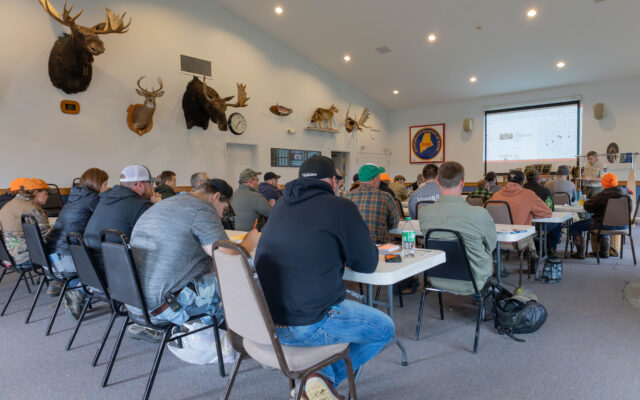
Interest in fur trapping is on the rise in Maine
By Julie Harris, Bangor Daily News Staff
Trapping animals may be one of the oldest types of hunting in Maine. At least that’s what one member of the Maine Trappers Associated was pointing out when he said this country was built on the fur trade.
But it also has evolved. Maine allows foot-hold traps, but has specific regulations on how they are set, how often the trapper has to tend them and when and where they can be used. The law also bans trapping lynx and requires an exclusion device that helps keep the protected species safe.
And unlike many states, Maine requires trapper education in order to obtain a trapping license. Interest in trapping is on the rise. The Maine Department of Inland Fisheries and Wildlife is also working on closing a loophole that allows people from other places who have had trapper licenses to come to Maine and get one without going through an education course.
The number of people taking IF&W trapping courses has increased from 149 in 2020 — the COVID-19 pandemic year — to 770 in 2024, and is still going strong, he said.

TRAPPER CLASS — The classroom was full at this 2023 trapper education class the state of Maine offered. Participants can get their trapper license after successfully completing the course.
Not all states require trapper education to obtain a license. Maine law allows someone who has taken a course elsewhere or who has had a prior license in another state to get a license without taking the state’s education course.
An element of the department’s omnibus bill LD152 will close that loophole, and require everyone to take trapper education, according to Ron Fournier, recreational safety supervisor for the DIF&W.
The state offers beginner courses on trapping and the Maine Trappers Association has at least five members who are certified instructors. The state and the MTA work together too. The state’s course is based on the one taught through the MTA.
“We just added more equipment and new ideas and we stay with the student beyond the course, through next-step programs,” Fournier said.
As a matter of fact, trapper education is the most in-demand course the department offers at the moment. The backlog of people who want to get into trapping has prompted DIF&W to offer additional sessions.
David Trahan, executive director for Sportsman’s Alliance of Maine, told the Maine trappers during their recent meeting it is the predominant class the state is offering at SAM’s new outdoor recreation education facility.
SAM’s facility is perfect for DIF&W’s classes that teach people how to hunt for various species, fish, trap, use a compass and other skills. It is centrally located in Augusta and has the environment needed for students to experience outdoors what they have learned in the classroom, Fournier said.
Maine requires an online course or its equivalent of a 132-page manual with a 40-page workbook; how to avoid catching a lynx video; and an eight-hour in-person class. There also are “next step” classes, such as how to process your furs.
Three of the primary reasons people said they signed up for trapping class were to expand their outdoor activities into something new, predator management and catching, processing and selling furs.
People also liked being outdoors, obtaining some of their own food and having new material for crafts.
Students are taught the different ways the animals they trap can be used to minimize waste, how to talk to non-trappers non-confrontationally and how to tell the story of trapping and its scientific benefits.
The DIF&W does not actively promote trapping, he said, but sees it as an education opportunity.
Maine has one of the most restrictive and comprehensive courses in the nation, and it’s in step with conservation, he said, pointing out that all instructors are state-certified and members of the Maine Trappers Association. Biologists, the state’s wildlife team and the MTA all are involved in the curriculum.
“There’s a culture shift. People are seeing trapping as sound conservation management,” Fournier said.